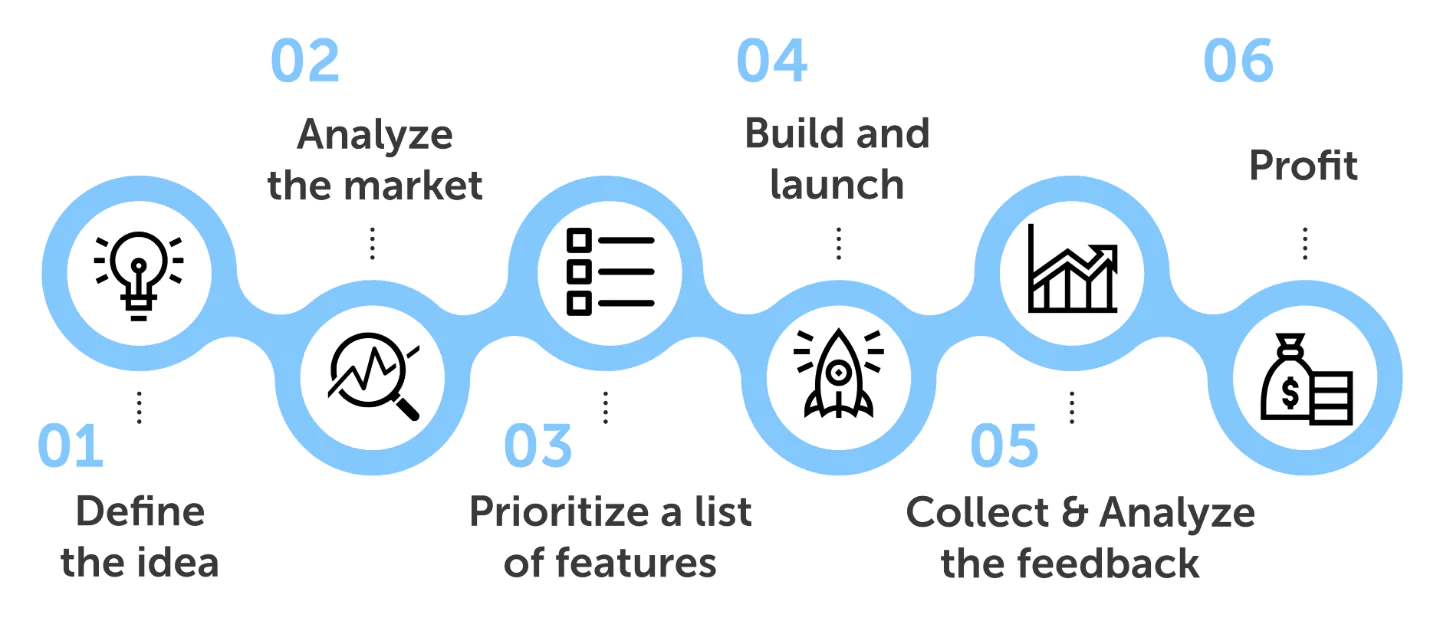MVP Growth Strategies
What are MVP Growth Strategies?
Definition:
MVP Growth Strategies refer to the deliberate and systematic approaches employed to promote the growth of a Minimum Viable Product (MVP). An MVP is the initial version of a product that includes only essential features, allowing a business to release it quickly and gather valuable user feedback. MVP Growth Strategies focus on optimizing the product’s market presence, user acquisition, and overall scalability. These strategies aim to drive user adoption, enhance product-market fit, and lay the foundation for sustained growth.
Analogy:
Consider MVP Growth Strategies as nurturing a seedling into a thriving plant. Just as a gardener carefully tends to a young plant, providing the right conditions for growth, MVP Growth Strategies involve nurturing the initial version of a product, fostering its development, and creating an environment for sustained growth.
Further Description:
MVP Growth Strategies encompass several key components:
User Feedback Loop: Establishing a continuous feedback loop is crucial. Encourage users to provide feedback on the MVP’s features, usability, and overall experience. Use this feedback to iterate and improve the product.
User Acquisition: Develop strategies to attract the right audience to the MVP. This may involve targeted marketing, social media campaigns, partnerships, or other methods to drive initial user adoption.
Product-Market Fit: Refine the MVP based on user feedback to ensure it aligns with market needs and demands. Achieving product-market fit is essential for sustained growth as it indicates that the product addresses a genuine market need.
Scalability Planning: Anticipate and plan for scalability challenges. As user numbers grow, ensure that the infrastructure, support, and resources can scale proportionally to meet increased demand.
Iterative Development: Embrace an iterative development approach. Instead of waiting for a perfect product, release updates and improvements regularly. This keeps the product dynamic and responsive to evolving user needs.
Community Building: Foster a community around the MVP. Engage with users through forums, social media, or other platforms. A strong community can become advocates for the product, contributing to its organic growth.
Lean Marketing: Focus on cost-effective marketing strategies, especially in the early stages. Experiment with different channels and measure their effectiveness to optimize marketing efforts.
Why are MVP Growth Strategies Important?
Resource Optimization: MVP Growth Strategies help allocate resources efficiently by concentrating efforts on features and marketing channels that contribute most to user acquisition and satisfaction.
Quick Market Validation: By releasing an MVP and gathering user feedback, businesses can quickly validate whether their product meets market needs, reducing the risk of investing resources in a product with uncertain market acceptance.
Agile Adaptation: Implementing growth strategies in tandem with an MVP allows for agile adaptation. Businesses can respond to market feedback and changing conditions more rapidly than with a fully developed product.
User-Centric Approach: MVP Growth Strategies emphasize a user-centric approach, ensuring that the product evolves based on real user experiences and preferences.
Early Market Entry: Getting an MVP into the market early allows businesses to establish a presence, gather early adopters, and start building brand recognition.
Examples and Usage:
Dropbox: Dropbox started as an MVP with a simple file-sharing concept. Through referral programs and user-friendly features, they grew rapidly, demonstrating the power of MVP Growth Strategies.
Airbnb: Airbnb began as a simple website allowing people to rent out their living space. By focusing on user experience and employing innovative growth tactics, they expanded into a global marketplace.
Instagram: Instagram’s initial version was a photo-sharing app with basic features. Through continuous updates, strategic partnerships, and user engagement, it became one of the leading social media platforms.
Key Takeaways – MVP Growth Strategies:
- Establish and maintain a continuous feedback loop with users to gather insights for product improvement.
- Develop targeted strategies for attracting the right audience to the MVP, driving initial user adoption.
- Refine the MVP based on user feedback to ensure it aligns with market needs and achieves product-market fit.
- Anticipate and plan for scalability challenges to ensure the product can handle increased demand.
- Embrace an iterative development approach, releasing updates regularly to respond to evolving user needs.
- Foster a community around the MVP to engage with users and build brand advocates.
- Focus on cost-effective marketing strategies, experimenting with different channels and measuring effectiveness.





